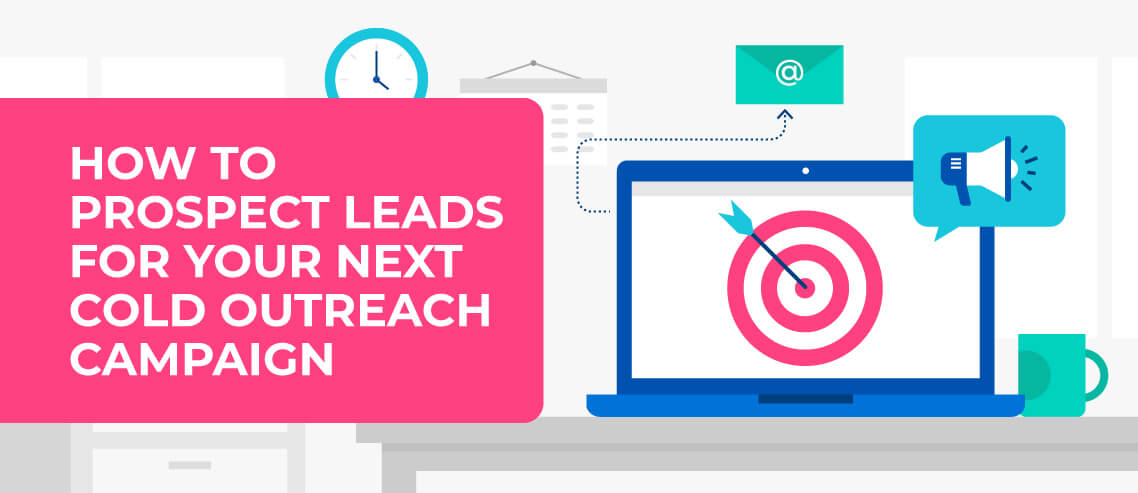5 Cold Email Lessons You Can Learn from “Never Eat Alone”

Contents
I first read Keith Ferrazzi’s book, Never Eat Alone, back when it came out in 2005 – and it changed the course of my career.
At the time, I was running my former agency, Single Grain. On Ferrazzi’s advice, I started reaching out to San Francisco’s huge tech network and scheduling meet-ups – not just for meals but for coffee and gym sessions in between as well.
It didn’t take long for Ferrazzi’s advice – “your network is your net worth” – to ring true for me.

I still practice the idea of “never eating alone” by scheduling growth dinners and other marketer meetups whenever I travel. But I’ve learned that the book’s principles don’t just apply to meals. They can be just as powerful when adapted to cold emailing.
1. Be the Solution
One of the strongest running themes in Never Eat Alone is the idea that your worth – both in terms of your finances and your personal fulfillment – depends on the value you create for others through relationships.
Ferrazzi puts it like this:
“SUCCESS IN LIFE = (THE PEOPLE YOU MEET) + (WHAT YOU CREATE TOGETHER).”
In the context of cold email, you’re the one driving the creation of value, since you’re the one initiating the contact. Simply put, if you want to succeed with cold emailing, you need to clearly articulate the problem you’re solving and the value you have to offer.
Conor Lee, founder of HipLead, shares two great examples of how to do this, which
“received interested rates of 3.77% (from customer support managers) and 4.01% (from sales managers) respectively,” across the 306,660 cold emails his company sent for 108 startups.
Example 1: You won’t need any new hardware, downloads, coding or training, and you’ll get a call center with all of the data and reporting you could want.
Example 2: We’re the only company that brings research data and science to the top of the sales funnel, and the vast majority of our clients report positive ROI within 90 days.”
In both of these cases, the sender’s value is made clear. Prospects can see immediate value, thanks to statements that:
- Imply an understanding of the reader’s pain points
- Offer a compelling solution
- Differentiate the solution being offered from competing providers
If you aren’t confident your cold emails are hitting the mark, put yourself in your prospect’s shoes. What do they need to hear from you to see value in the solution you’re offering?
2. Develop Your Cold Emailing Muscles
In Never Eat Alone, Ferrazzi compares building a network to growing a muscle, rather than eating a cake.
When you slice up and eat a cake, it disappears; when you challenge a muscle, it grows.
Relationships – like muscles – get stronger with use. But as Ferrazzi points out, you don’t get strong overnight. It takes regular, consistent gym visits to see significant strength gains – just like you can’t send one cold email and drive all the success you’ll ever need.
Developing your cold emailing muscles requires two things:
- Reaching out to new people regularly
- Following up with past campaigns consistently
One of Never Eat Alone’s key themes is that you have to be constantly expanding your network. The same goes for cold emailing.
Even if you operate in a relatively small market, you won’t get very far if you cold email 20 people in one day and then call it quits. Cold emailing is a numbers game. The more messages you send, the greater your chances are that they’ll reach the right people.
Similarly, it isn’t enough – even if you’re diligent about expanding your network of cold email recipients – to send a single message.
Steli Efti of close.io actually recommends sending three separate follow-up messages for every cold email you send, for one simple reason: timing.
“It likely just so happened that the recipient saw the original email when they were too busy or distracted by something that prevented them from taking action. That’s why it didn’t register on their radar. Then they got a follow-up email from you, which was sent at a better time, a time when the recipient had the attention, mental bandwidth, and time to consciously process and respond to your email.”
Exercise your cold email muscles every day by sending to new people and by following up with the people you’ve already reached out to. Over time, revenue-generating relationships will reveal themselves.
3. Use Cold Email Before You Need the Sale
These relationships, Ferrazzi makes quite clear, are your lifeblood:
“Your network is your destiny, a reality backed up by many studies in the newly emergent fields of social networking and social contagion theory. We are the people we interact with.”
One problem that Ferrazzi notes, however, is that too many of us wait to build these relationships until we need them, which gives the connections we make a desperate quality.
Ask yourself this question: do you send cold emails regularly, or are you waiting until you’re coming up against sales quota deadlines before you make an effort?
Experiment27’s Alex Berman explains the better alternative:
“What is better is sending a batch of emails consistently to build up a pipeline, that way you don’t run into an issue where you have a really good month, by making deals and selling and then the next month – since you haven’t been sending cold emails – you have nothing and you’re basically flat-lining.”
No one wants to look desperate, but sending cold emails when it’s clear you’re doing it for your own profit does exactly that.
Don’t be that guy. Even if you’re only sending out two or three new cold emails a day, be consistent. You can always increase your frequency in the future, but you can’t go back in time to reclaim missed opportunities.
4. Think Quality
As someone who’s advocating for the creation of huge numbers of relationships, Ferrazzi is quick to acknowledge that it’s quality – not quantity – that matters most when forming connections.
In terms of in-person relationships, Ferrazzi calls these high-value interactions “relationship glue.” It isn’t the little contacts – the check-in phone calls or emails – that build relationships. It’s the memorable events; the check-ins where you connected beyond a surface level. These are the interactions that build strong relationships.
Translate this thinking into your cold sales emailing. Regular follow-up is important, as established in the quote from Steli Efti above.
But go beyond that.
In an article for Hubspot, contributor Ginny Mineo shares the best cold email pitch she’s ever received, from Videofruit’s Bryan Harris:

Notice the difference?
Bryan isn’t giving an empty sales pitch or begging Ginny for a meeting. Instead, he’s investing in the connection he’s hoping to build with her, thanks to some high-value “email relationship glue.”
To be fair, many of the kinds of “relationship glue” Ferrazzi describes are the kinds of interactions you’d have as your relationship grows – things like sports events you’ve attended together or deep conversations you’ve had about shared philosophies.
You aren’t going to dive into your life’s purpose in your first cold sales email to a new prospect. But that doesn’t mean you can’t offer quality early on to make it clear your interest is in the relationship more than the sale.
Look for opportunities to add value – as Videofruit’s Harris did – whether or not you’ve deepened your relationship past your initial interaction. Offer “glue” whether it’s reciprocated (or wanted) or not.
5. Be Generous
Thinking quality and sharing value in every cold email you send is a big part of the generosity Ferrazzi advocates for in Never Eat Alone. But it goes beyond that.
What would you do if a prospect responds to your cold email and tells you that your product or service isn’t the right fit – but you know of a competitor that’d do a better job?
Do you make the connection generously or do you get resentful over the lost sale?
The right answer should be obvious here. Generosity, when cold emailing, is about helping the people you’re reaching out to find the solutions they need – whether or not it comes from you.
Ferrazzi sums it up this way:

Be the generous relationship-builder who puts their cold email prospects’ needs above their own. The rewards may not be immediately apparent, but when you make it a point to be a connector, they’ll come back to you in the end.
Cover Image: Keith Ferrazzi FB Page





